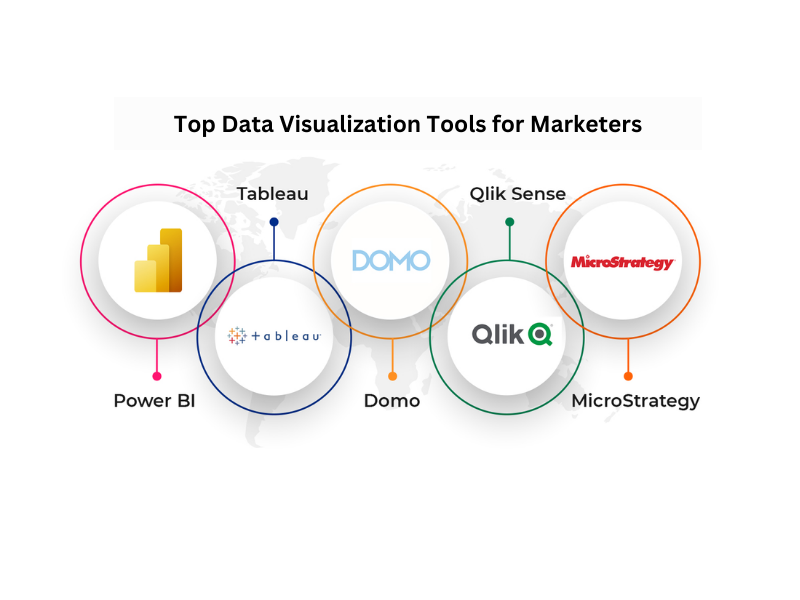Ever wondered why some marketing campaigns hit the mark while others fall flat? It might surprise you, but the secret isn’t just creativity or luck—it’s data. More specifically, it’s what you do with that data. A/B testing is the unsung hero behind many successful marketing strategies, offering a methodical way to make data-driven decisions that can transform your marketing performance. If you’ve been struggling to improve your campaigns or just want to fine-tune your approach, this guide will reveal how A/B testing can be your key to success. Ready to dive in?
What is A/B Testing and how A/B testing can be your key to success?
A/B testing, also known as split testing, is a simple yet powerful technique used by marketers to compare two versions of a webpage, email, or other marketing assets. The idea is to see which version performs better in achieving a specific goal—like more clicks, sign-ups, or purchases. Imagine you’re torn between two headlines for your latest email campaign. With A/B testing, you don’t have to guess which one will work best. Instead, you can send each version to a portion of your audience and let the data tell you which one resonates more.
This method is crucial because it takes the guesswork out of decision-making. By relying on actual user behavior rather than assumptions, A/B testing allows you to make informed, data-driven decisions that can significantly enhance your marketing performance.
Step-by-Step Guide to Conducting A/B Tests
Conducting an A/B test might seem daunting, but it’s actually a straightforward process when broken down into manageable steps. Here’s how you can get started:

1. Setting Clear Goals
Before anything else, you need to define what you want to achieve with your A/B test. Are you looking to increase click-through rates, improve conversion rates, or perhaps boost engagement? Having a clear, specific goal in mind is crucial because it guides the entire testing process. For example, if your goal is to increase newsletter sign-ups, every aspect of your test should focus on elements that could impact that outcome.
2. Creating Hypotheses
Once your goal is set, the next step is to form a hypothesis. This is essentially an educated guess about what change will lead to an improvement. Let’s say you believe that changing the color of your call-to-action button from blue to red will result in more clicks. Your hypothesis would be: “If the call-to-action button color is changed to red, then click-through rates will increase.” This hypothesis will be the foundation of your test.
3. Choosing the Right Variables
Deciding what to test is one of the most important aspects of A/B testing. Common variables include headlines, images, call-to-action buttons, and even the placement of elements on a page. The key is to test one variable at a time to isolate the effect of each change. For instance, if you change both the headline and the image simultaneously, it will be difficult to determine which change led to any observed improvements.
4. Running the Test
Now that you’ve chosen your variable, it’s time to set up and run your test. Depending on the tool you’re using, this could involve dividing your audience into two groups at random—Group A sees the original version, while Group B sees the variation. The key here is to ensure that the only difference between the two groups is the variable you’re testing. This maintains the integrity of your results.
5. Duration of Testing
One of the most common pitfalls in A/B testing is not letting the test run long enough. Ideally, you should run your test until you’ve gathered enough data to reach a statistically significant result. This usually means allowing the test to run for at least a week, but the exact duration will depend on the volume of traffic or interactions you receive. The goal is to ensure your results are reliable and not just due to random chance.
Common Mistakes to Avoid in A/B Testing
Even though A/B testing is a powerful tool, it’s not foolproof. To get the most accurate and useful results, you need to steer clear of some common pitfalls. Here are the top mistakes to avoid:

1. Ignoring Sample Size
One of the biggest mistakes is running a test with too small a sample size. If your test group is too small, the results may not accurately reflect how your broader audience will respond. On the flip side, a sample that’s too large can lead to unnecessary delays and resources spent. Striking the right balance is crucial. Use online calculators or built-in tools to determine the correct sample size needed for your test to reach statistical significance.
2. Testing Too Many Variables at Once
It’s tempting to want to test multiple elements at once—like changing the headline, button color, and image all in a single test. However, this approach can muddy the waters. If you test too many variables at once, it’s impossible to know which change was responsible for any observed differences in performance. The best practice is to test one variable at a time. This way, you can pinpoint exactly what’s driving the change.
3. Stopping Tests Too Early
Patience is key when it comes to A/B testing. Many marketers make the mistake of stopping a test as soon as they see a positive result. However, early results can be misleading, especially if the test hasn’t reached statistical significance. Stopping a test too early can lead to incorrect conclusions, causing you to implement changes that might not actually work in the long run. It’s important to allow the test to run its full course to ensure the data is reliable.
Analyzing A/B Test Results
After running your A/B test, the next critical step is analyzing the results. This is where you turn data into actionable insights that can drive your marketing performance forward. Here’s how to do it:

1. Interpreting Data
Once your test is complete, the first thing to do is review the data. Look at key metrics like conversion rates, click-through rates, or any other goals you set at the beginning. Compare the performance of your original version (the control) with the variation. Did the variation outperform the control, or did the control hold steady? Tools often provide statistical analysis to help determine if the observed difference is significant or if it could be due to random chance. Focus on metrics that directly tie back to your initial hypothesis.
2. Making Data-Driven Decisions
With the data in hand, you can now make informed decisions. If your variation performed better, it’s time to implement that change across your marketing campaign. But if the test didn’t yield significant results, don’t be discouraged. Even a “failed” test provides valuable information—it tells you what doesn’t work, allowing you to refine your approach and try again. The key is to base your next steps on the insights you’ve gained from the data, rather than gut feelings.
3. Iterating Based on Results
A/B testing is not a one-time activity but rather a continuous process of optimization. Once you’ve implemented changes based on your test results, consider running another test to further refine your strategy. Maybe you’ll test another element, like a different headline or a new layout. Iteration is the heart of data-driven marketing. By continually testing, analyzing, and refining, you can steadily improve your marketing performance over time.
Real-World Examples of Successful A/B Testing

To truly understand the power of A/B testing, it helps to look at some real-world examples where companies have used this technique to achieve remarkable results. Here are a couple of success stories:
1. Case Study 1: An E-commerce Giant Increases Sales
One well-known e-commerce company wanted to improve its product page conversions. The original page featured a single, long description of the product, while the variation broke the description into easily digestible bullet points with highlighted benefits. After running the A/B test, the results were clear: the variation led to a 20% increase in sales. The reason? Customers found it easier to quickly scan the information and understand the product’s value, leading to higher purchase rates.
Lesson Learned: Simplicity and clarity can significantly impact user experience and conversion rates. If you make it easier for users to absorb key information, they’re more likely to take action.
2. Case Study 2: A SaaS Company Boosts Sign-Ups
A software-as-a-service (SaaS) company was struggling with low sign-up rates for its free trial. The original sign-up form required users to fill out multiple fields, including detailed company information. The variation was a simplified version that asked for just the essentials: name, email, and password. The result? A 30% increase in trial sign-ups. By reducing friction in the sign-up process, the company made it easier for potential users to get started, leading to a significant uptick in conversions.
Lesson Learned: Reducing friction in user interactions—whether it’s fewer form fields or a more straightforward user journey—can lead to higher conversion rates. The easier you make it for users to engage, the more likely they are to follow through.
3. Key Takeaways from These Examples
- Focus on User Experience: Enhancing user experience by simplifying content or processes often leads to better outcomes.
- Test Incremental Changes: Even small changes, like the format of a product description or the number of form fields, can have a big impact on conversions.
- Continuous Improvement: The companies in these examples didn’t stop after one test. They used their results to continuously refine and improve their strategies.
Tools and Software for A/B Testing
To effectively conduct A/B testing, you need the right tools. Thankfully, there are several reliable options available that cater to different needs and budgets. Here’s an overview of some popular A/B testing tools:

1. Google Optimize
- Overview: Google Optimize is a free tool that integrates seamlessly with Google Analytics, making it a great option for businesses already using Google’s suite of products. It allows you to test different versions of your web pages and offers advanced targeting options.
- Best For: Small to medium-sized businesses looking for an accessible, budget-friendly option that offers robust features.
2. Optimizely
- Overview: Optimizely is one of the most well-known A/B testing platforms, offering powerful features like multivariate testing, personalization, and experimentation across multiple channels. It’s a comprehensive tool that’s ideal for larger organizations with more complex needs.
- Best For: Enterprises and companies with more advanced testing requirements and a need for multichannel testing.
3. VWO (Visual Website Optimizer)
- Overview: VWO offers an intuitive platform for A/B testing, multivariate testing, and split URL testing. It includes a visual editor that allows you to make changes to your website without needing to code, which is perfect for marketers who aren’t tech-savvy.
- Best For: Businesses that need a balance of ease of use and powerful features, especially those that want to make quick, no-code changes.
4. Unbounce
- Overview: While primarily known as a landing page builder, Unbounce also offers A/B testing capabilities. It’s particularly useful for marketers who want to quickly test and iterate on landing pages without involving a development team.
- Best For: Marketers focused on optimizing landing pages and conversion rates without needing extensive technical support.
5. Adobe Target
- Overview: Adobe Target is part of the Adobe Experience Cloud and offers extensive capabilities for A/B testing, personalization, and automated targeting. It’s designed for large organizations that need enterprise-level solutions.
- Best For: Enterprises with significant resources and a need for a fully integrated testing and personalization platform.
Choosing the Right Tool
When selecting an A/B testing tool, consider the following factors:
- Budget: Determine how much you’re willing to invest. Free tools like Google Optimize can be great starting points, while paid tools offer more advanced features.
- Ease of Use: Consider who will be using the tool. If your team isn’t familiar with coding, opt for a tool with a visual editor.
- Integration: Ensure the tool integrates well with your existing software stack, such as your analytics platform or CRM.
The Role of A/B Testing in a Larger Marketing Strategy
A/B testing isn’t just a one-off tactic; it’s a fundamental part of a broader, data-driven marketing strategy. Here’s how A/B testing fits into the bigger picture:

1. Integration with Other Strategies
A/B testing should be viewed as a complementary tool that enhances other marketing efforts. Whether you’re running email campaigns, optimizing landing pages, or tweaking ad copy, A/B testing provides the evidence you need to refine and improve these initiatives. For instance, insights gained from A/B testing can inform your content strategy by revealing which headlines or themes resonate most with your audience. Similarly, testing different ad creatives can help you identify the visuals that drive the most engagement, allowing you to allocate your budget more effectively.
2. Continuous Improvement
The digital landscape is constantly evolving, and what works today might not work tomorrow. That’s why continuous testing and optimization are essential. A/B testing allows you to keep pace with changing trends and audience preferences by providing a structured way to experiment and learn. By regularly testing different elements of your campaigns, you can make incremental improvements that add up to significant gains over time. This iterative process ensures that your marketing strategy remains agile and effective.
3. Long-Term Benefits
The benefits of A/B testing extend beyond immediate results. Over time, the insights you gain from testing can lead to a deeper understanding of your audience and their behavior. This knowledge can then be applied across your entire marketing strategy, from product development to customer engagement. Furthermore, a culture of testing and experimentation fosters innovation within your team, encouraging creative thinking and data-driven decision-making.
Why A/B Testing Matters in the Big Picture
- Data-Driven Decisions: A/B testing shifts your marketing strategy from guesswork to a data-driven approach, leading to more effective and measurable outcomes.
- Maximized ROI: By continuously testing and optimizing, you ensure that your marketing dollars are spent on strategies that deliver the highest return on investment.
- Enhanced Customer Experience: The insights gained from A/B testing help you tailor your marketing efforts to better meet the needs and preferences of your audience, resulting in a more personalized and satisfying customer experience.
Conclusion
A/B testing is more than just a tool—it’s a mindset that can transform how you approach marketing. By allowing data to guide your decisions, you can confidently make changes that improve your campaigns, boost conversions, and ultimately drive better business results. Whether you’re optimizing a landing page, fine-tuning email campaigns, or experimenting with new ad creatives, A/B testing offers a structured, reliable way to find out what truly works.
The key takeaway? Don’t leave your marketing success to chance. Start small, test often, and use your findings to continuously refine your strategy. The insights you gain today could be the game-changer for your next big campaign.













